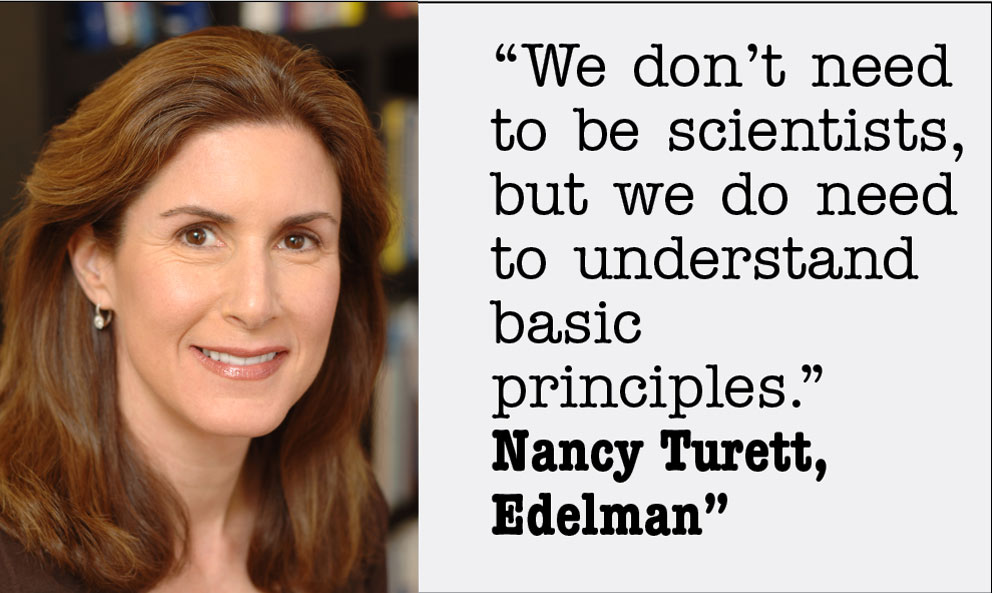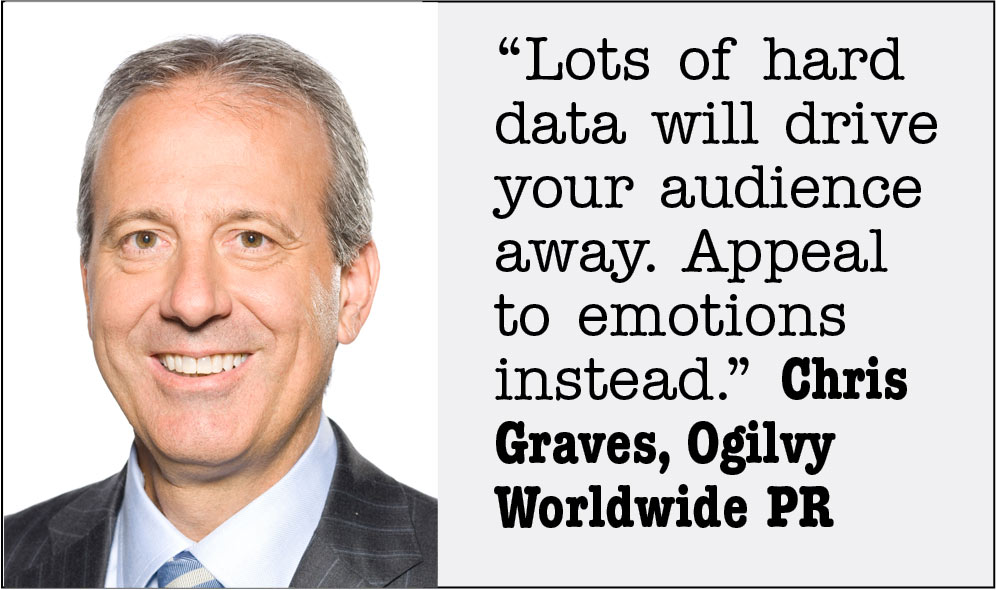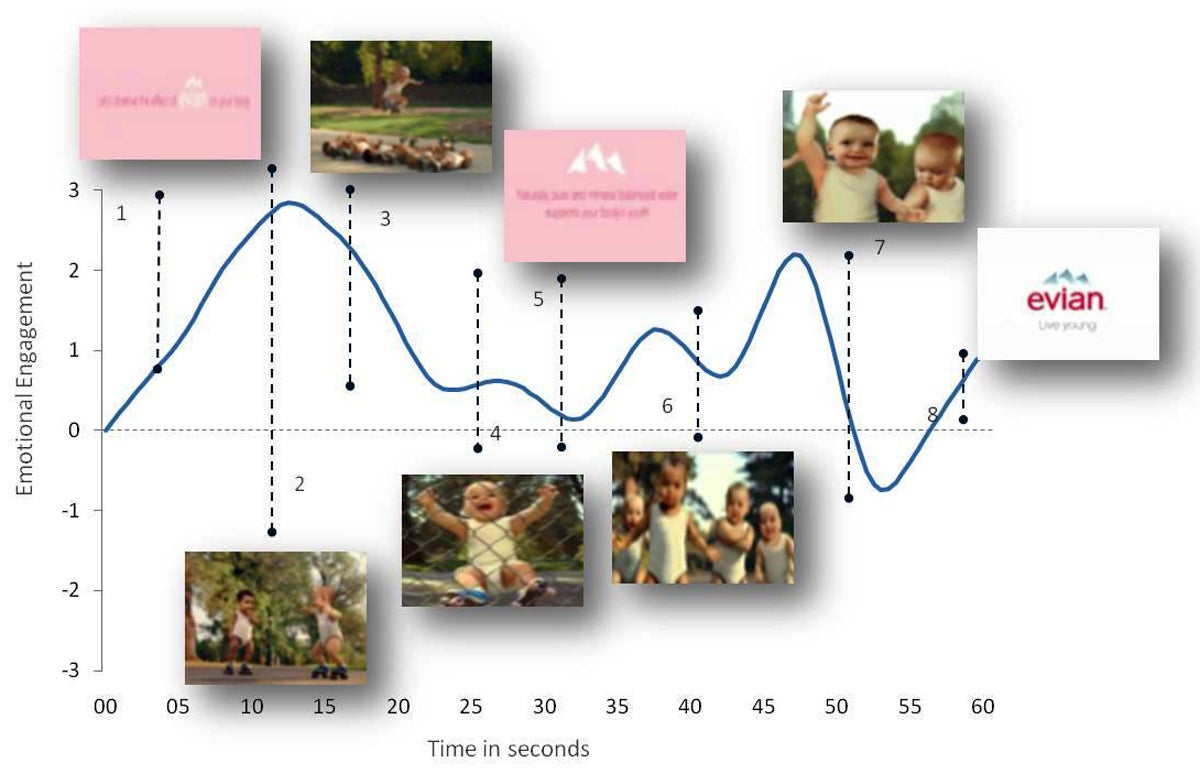 |
The idea of PR professionals wanting to understand what’s inside the heads of their stakeholders isn’t a new one. In fact, there’s been a long history of a relationship between behavioral science, psychology, neuroscience and public relations, says Nancy Turett, global president of health at Edelman.
But it seems now that as technologies that enable actually getting inside people’s thoughts and emotions improve, neuroscience is coming to the forefront as a key development in PR.
Turett, who has a degree in psychology, has seen a groundswell taking place in communications. “I notice an increasing number of people in PR who are getting additional training in psychology,” she says.
 |
One of those people who has taken a deep interest in the field is Ogilvy Worldwide PR Worldwide CEO Chris Graves, who was exposed to behavioral economics in 2005 and has been on a neuroscience fact-finding mission ever since.
Currently though, practical neuroscience applications are more readily found in marketing and advertising, particularly in biometrics, which is essentially neurological testing of the brain. A September 2011 article in Fast Company profiled NeuroFocus, a company owned by Nielsen Research that provides tools to tap into the brain. Organizations such as PepsiCo, Intel, CBS, eBay and ESPN have used NeuroFocus to test commercials, food products and corporate identities.
 |
| Emotional Rollercoaster: As an experiment, market research company Ipsos conducted biometric research on subjects watching an Evian Babies online video. Note the highs and lows. Source: Ipsos |
Similarly, market research company Ipsos recently partnered with biometrics firm Innerscope to test ads, packaging and more for its clients (see the chart of Ipsos’ own biometric test on an Evian Babies video). “These techniques are just a tool,” says David Brandt, who leads product innovation at Ipsos. “Communicators must go back to what cognitive psychology and neuroscience have taught us about emotion and how people think.”
And that’s where the tie to PR is strongest. “A neurological underpinning is essential to understanding how people think so we can help people make better decisions, and live with them,” says Turett.
Graves agrees with the growing importance of at least an understanding of the principles discovered through neuroscience that PR pros can put into practice. Here’s his take on three of those principles:
1. LOSS AVERSION
Principle: Discovered by Amos Tversky and Daniel Kahneman, loss aversion is the tendency for people to strongly prefer avoiding losses to acquiring gains. Some studies suggest that losses are as much as twice as psychologically powerful as gains.
PR application: “To get people incentivized, instead of saying ‘if you do this you’ll get $100, say ‘I’ve got $100 for you, but if you don’t do this, I’ll decrease it by $25,” says Graves.
2. HOMOPHILY, OR “BIRDS OF A FEATHER”
Principle: Individuals tend to associate and bond with people similar to them.
PR Application: Best used when mobilizing groups for cause campaigns, for example, says Graves. “If you want to get people together for a cause, don’t scold them into joining. Instead, say “7 out of 10 people are concerned about this cause.”
3. CONFIRMATION BIAS
Principle: Decision makers have been shown to actively seek out and assign more weight to evidence that confirms their hypothesis, and ignore or under-weigh evidence that could disconfirm their hypothesis. Thus, says Graves, “providing more hard evidence or data will actually drive your targets away.”
PR Application: “Make your messages appeal to emotions,” says Graves, who has been presenting a storytelling workshop to Ogilvy divisions and corporations around the globe. That workshop stresses emotions.
IT’S ACADEMIC
Since much neuroscience and cognitive psychology studies originate from academia, Turett hopes that PR pros understand the value of staying closer to the academic world. “We don’t have to be scientists, but we do need to understand the basic principles,” she says. “We’re asking our audiences to make important decisions about finance, technology and health—and there should be some science behind that.”
Graves seconds that. So much so that he’s amassed 500 pieces of original research in neuroscience since then. And just what does that research show? Graves isn’t talking, because he plans to make Ogilvy a leader in the use of neuroscience-led PR strategies sooner rather than later.
So the next time a PR colleague says, “I want to pick your brain,” you might want to listen to what they have to say, but move slightly away. PRN
CONTACT:
Nancy Turett, [email protected]; Chris Graves, [email protected]; David Brandt, [email protected].
